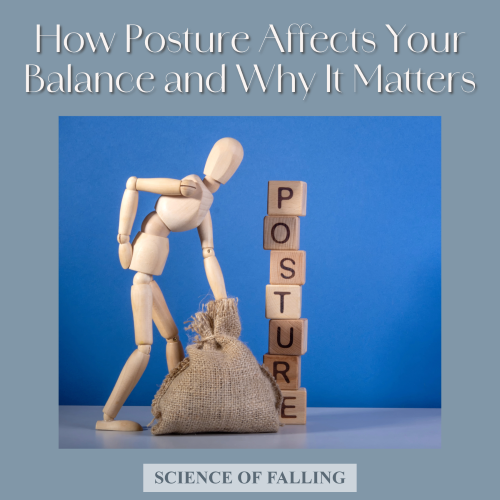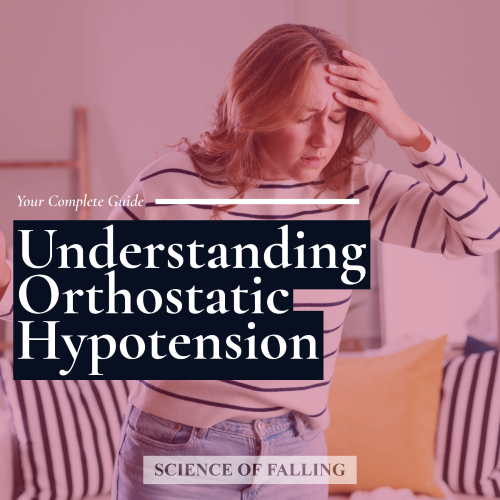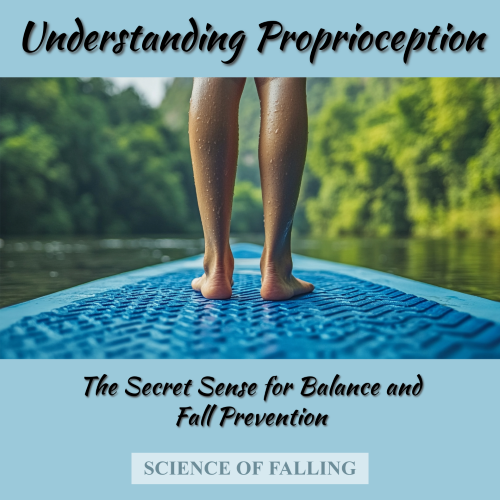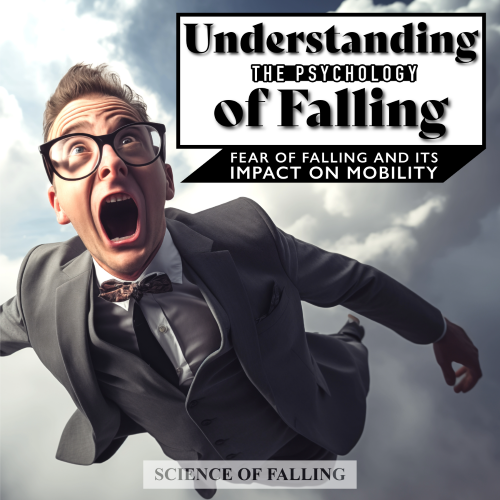Articles
How Posture Affects Your Balance and Why It Matters
Discover how posture affects balance and why it matters for stability, injury prevention, and overall health. Learn how poor posture can increase fall risks, while good posture enhances movement efficiency, reduces strain, and supports balance. Whether you're aiming for better health or maintaining independence as you age, this article explains the vital connection between posture and balance, with tips for improving both.
Understanding Orthostatic Hypotension: Your Complete Guide
Learn all about orthostatic hypotension (OH), a condition where standing causes a sudden drop in blood pressure, leading to dizziness, lightheadedness, and an increased risk of falls, especially in older adults. This complete guide covers the causes, symptoms, and risk factors of OH, plus effective prevention and management strategies, such as gradual position changes, proper hydration, and compression stockings. Whether you're an older adult, caregiver, or healthcare professional, understanding OH is key to improving balance, reducing fall risks, and maintaining safety.
How Arm Movements Improve Balance: Essential Tips for Stability, Coordination, and Fall Prevention
Discover how arm movements play a key role in improving balance, stability, and fall prevention. Learn essential tips and exercises to harness your arms as natural stabilizers, enhancing coordination and mobility—especially for older adults. Explore the science behind arm motions and their impact on balance in everyday life and sports.
Wearable Falling Airbags: The Next Step in Fall Injury Prevention?
Discover the future of fall injury prevention with wearable falling airbags. These innovative devices automatically deploy airbags to cushion falls and reduce injury risk, especially for older adults and those with balance disorders. While research shows promising results, more studies are needed to confirm their effectiveness. Learn about the technology, benefits, and limitations of wearable airbags as part of a comprehensive fall prevention strategy. Explore how they complement other methods like balance training and home modifications for enhanced safety.
Your Eyes and Balance: How Vision Keeps You Steady
Discover how your eyes play a critical role in maintaining balance and preventing falls. Learn about the visual components that contribute to stability, the challenges that can affect balance, and the importance of eye health for staying steady. Explore tips for improving vision-related balance and preventing falls, especially for older adults.
Understanding the Somatosensory System and Its Role in Balance
Discover the critical role of the somatosensory system in maintaining balance, especially as we age. Learn how this internal communication network helps detect body position and movement, preventing falls. Explore practical exercises to enhance proprioception and sensory feedback, improving stability and mobility. Perfect for older adults or those looking to optimize balance and reduce fall risk.
The Science of "Air Sense" in Sport: How Athletes Know Where They Are While Flipping
Discover the science behind "air sense" in sports, the ability athletes develop to control their movements while airborne. Learn how the vestibular system, proprioception, and vision work together to provide spatial awareness, enabling gymnasts, parkour athletes, and others to execute complex flips and twists with precision. Explore how brain adaptation and neuroplasticity enhance this skill through training and practice.
Understanding Proprioception: The Secret Sense for Balance and Fall Prevention
Discover how proprioception, the body's "sixth sense," plays a crucial role in balance and fall prevention. Learn how this hidden sense helps you maintain stability and coordination, and explore effective exercises to train and improve proprioception for better movement and safety, especially as you age. Enhance your balance and reduce fall risks with practical tips and expert insights.
How Babies Learn to Balance: A Journey of Growth and Development
Learn how babies develop balance through key milestones like head control, sitting, crawling, and walking. Explore the role of the vestibular system, vision, and proprioception in their growth, and discover how parents can support this journey with simple activities like tummy time and interactive play. This article offers valuable insights into the complex, yet fascinating process of balance development in infants.
What is Sensory Reweighting: The Key to Balance, Stability, and Coordination
Discover the power of sensory reweighting and its impact on balance, stability, and coordination. Learn how your brain shifts focus between vision, vestibular, and somatosensory inputs to keep you balanced in varying environments. This article explores the science behind sensory reweighting, its everyday applications, and training techniques to enhance your balance system. Whether you're an athlete, older adult, or recovering from injury, understanding and improving sensory reweighting can boost your stability and prevent falls.
How Dancers Spin Without Getting Dizzy: The Science Behind Their Control and Balance
Discover the science behind how dancers spin without getting dizzy! Learn about techniques like spotting, vestibular adaptation, and neuroplasticity that help dancers maintain control and balance. This article explores how these methods can reduce dizziness and improve stability, with applications for balance therapy and everyday life.
Which Parts of the Brain Are Responsible for Balance and Equilibrium?
Discover how your brain keeps you balanced and stable, from the vestibular system to the cerebellum and brainstem. Learn about the key brain regions responsible for equilibrium, the role of proprioception, and how balance training can enhance coordination and reduce the risk of falls. Explore how neuroplasticity allows your brain to adapt and improve balance over time, keeping you steady in daily life.
Vestibular Physiology: How Your Inner Ear Maintains Balance, Prevents Dizziness, and Affects Spatial Awareness
Learn how the vestibular system in your inner ear maintains balance, prevents dizziness, and helps with spatial awareness. Discover the role of fluids, semicircular canals, and otolith organs in detecting motion, and understand how vestibular health impacts everyday stability. Explore tips for improving balance and preventing dizziness through targeted exercises in this detailed guide.
Out of This World: How Space Messes with Your Balance
Explore how space disrupts astronauts' balance in microgravity, causing disorientation and space motion sickness. Learn how the brain adapts through neural recalibration and how these insights could help with balance disorders on Earth. Discover the challenges astronauts face, their coping mechanisms, and how space research is paving the way for new therapies in vestibular health.
The Reorientation Illusion: What It Is and How It Relates to Your Balance
Discover how the reorientation illusion affects your balance and increases fall risk. Learn how conflicting sensory signals from your vision, vestibular, and proprioceptive systems can confuse your brain, leading to disorientation. Explore practical tips for strengthening your balance systems and preventing falls at any age.
How Falls Cause Traumatic Brain Injuries (TBI): Understanding the Risks and Prevention
Falls are a leading cause of traumatic brain injuries (TBI), particularly in older adults. This article explores the risks associated with TBIs from falls, including symptoms, severity, and long-term consequences. Learn how falls can lead to life-changing brain injuries and discover effective prevention strategies, such as home modifications, strength and balance training, and proper use of assistive devices. Understanding the risks and taking proactive steps can help protect yourself and your loved ones from the devastating effects of a fall-related TBI.
Learn to Fall Safely: The Origins and Practical Applications of Parkour Ukemi
Discover how parkour ukemi blends athleticism and safety, combining parkour movement with martial arts fall techniques to minimize injury. Learn about its military origins, urban evolution, and practical applications for athletes, first responders, and older adults, focusing on injury prevention and resilience in everyday life.
Understanding the Psychology of Falling: Fear of Falling and Its Impact on Mobility
Explore the psychology behind the fear of falling (FOF) and its impact on mobility. Learn how the fear-avoidance cycle weakens physical health, the role of social support in overcoming FOF, and practical strategies for regaining confidence and improving balance. Discover how small, actionable steps can help break the cycle and enhance overall quality of life.
Unlocking the Secrets of Spatial Orientation: How Your Body Knows Which Way is Up
Explore how your body determines which way is up in this article on spatial orientation. Learn about the three key systems—vestibular, visual, and somatosensory—that work together to keep you balanced and oriented. Discover how sensory mismatches can lead to dizziness, vertigo, or motion sickness, and why visual illusions can trick your brain. Understanding these processes can help prevent disorientation and improve balance, especially as you age.
The Definitive Guide to Unstable Balance Training: Controversy, Benefits, Limitations
Discover the pros and cons of unstable balance training (UST) in this definitive guide. Learn how exercises on unstable surfaces, like Bosu balls and foam pads, can enhance balance, coordination, and injury prevention. Explore the benefits, limitations, and ideal users for UST, from older adults to athletes, and understand why it may not always be the best option for maximal strength or sports performance.




















